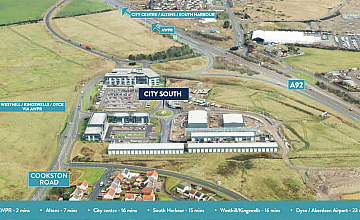Document disasters?
Did you know that most small and medium enterprises (SMEs) spend up to 3% of their revenues on copying and printing? That 3% is a hefty amount to spend on such an unregulated and unmeasured activity.
The bad news? SMEs are susceptible to a myriad of document disasters. The good news? Nearly all of them are avoidable with when managed properly. Here are five document disasters you can stop before they start.
Paying to recycle your cash

Over half of all print jobs remain unclaimed at the printer – over 50%. That’s over half of your paper wasted for no reason at all.
Does that sound hard to believe? Try to remember the last time you walked by the printer and saw documents just sitting in the tray. Chances are, you’ve already seen it today.
To make matters worse, nearly a third of documents are printed, read, and then discarded shortly after.
That’s 80% of your print costs going straight in the recycling (which you’re also paying for!), or over 2% of your overall revenue.
By regulating your office’s paper use, these costly figures can be significantly reduced without impacting productivity or convenience.
Quick tip: implement a simple office printing policy. For example, no printing emails, or releasing print jobs only when at the machine.
Duplicating your efforts . . . tenfold

The average document is copied nine to 11 times, and every 12 filing cabinets require an additional employee to maintain*. That’s wasted time, wasted money, and wasted effort. Not to mention wasting space that could be used for a pool table!
Adding insult to injury, most office workers spend over 50 minutes per day looking for information. That’s over four hours a week, over 200 hours a year, devoted to something entirely avoidable.
Quick tip: organise your documents on a searchable, electronic database. Services such as Laserfiche make this easy and effective.
Turning a print job into a lawsuit

Legislation such as the Data Protection Act 1998 and the upcoming General Data Protection Regulation are designed to protect personal information from data breaches. This means all organisations have a responsibility to review how they collect, hold, and process personal data.
Most organisations think they have data breaches under control by ensuring it’s all password-protected and doesn’t leave the network. Printers, however, are usually forgotten.
Over 70% of organisations have suffered at least one data breach because of unsecured printing. Printers tend to store a copy of the document locally, as well as receiving the document over unsecured connections, opening lots of vulnerabilities to data breaches. It’s a legal, financial, and reputational disaster waiting to happen!
Quick tip: if they haven’t already, ask your IT department to review your current safeguards and possible security software solutions.
Crashing and burning (literally and figuratively)

What happens if your business was hit by a fire or (perhaps more likely in Scotland) a sudden flood? You might have a disaster recovery plan involving remote working and insurance, but what’s often overlooked are documents. From signed contracts to invoicing, there are plenty of key documents you won’t want washed away.
A high number of businesses never recover from a major disaster. There is a very real risk of being swept away in face of a major disaster. You can avoid such document disasters.
Quick tip: document backups are key. A secure offsite server is a good start, and paired with document management technology it can even backup scans and other print jobs.
Going without a printer

While the dream of the ‘paperless office’ is still alive and well, most of us still need to print documents. It doesn’t matter where you work – hard copies can be useful for all kinds of reasons. Being stuck without a printer isn’t really an option.
Yet this is the situation many organisations find themselves in. Their printers, scanners, or software develops a fault, and support is potentially days away. Not only does this hold work up, but it paints your organisation in a bad light.
Quick tip: check that your print support SLA ensures support within a day. Any longer will start to cost serious money. (By the way, Capital’s standard response time is four hours for emergency calls. Furthermore, a recent sample of 1900 emergency calls logged had our average response at 2.3 hours).
No more document disasters? What next?

In conclusion, prevention is the best medicine for document disasters of all sizes. At Capital, we offer long-term solutions, not just short-term savings.
So get in touch to find out how we can save up to 30% on print costs for your business.
* http://www.thepaperlessproject.com/facts-about-paper-the-impact-of-consumption
Posted in Document Management Solutions



